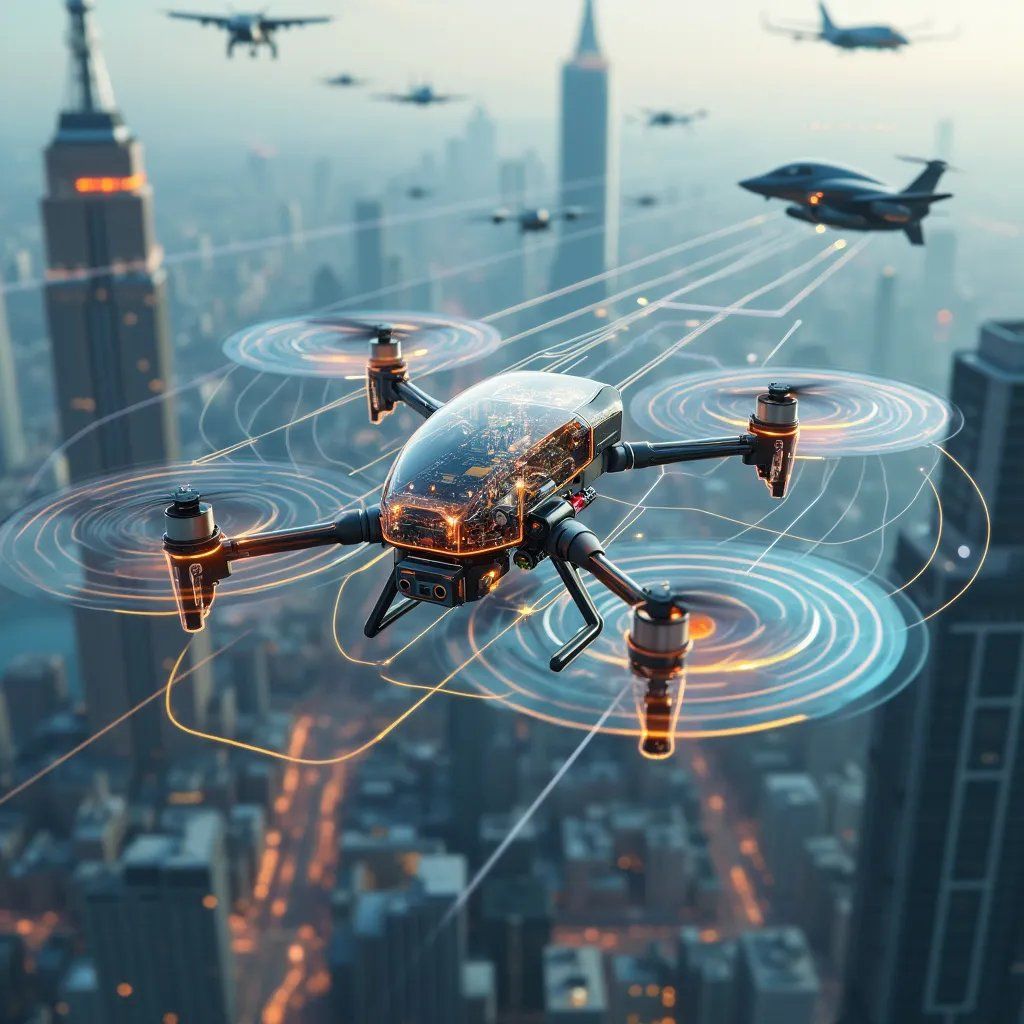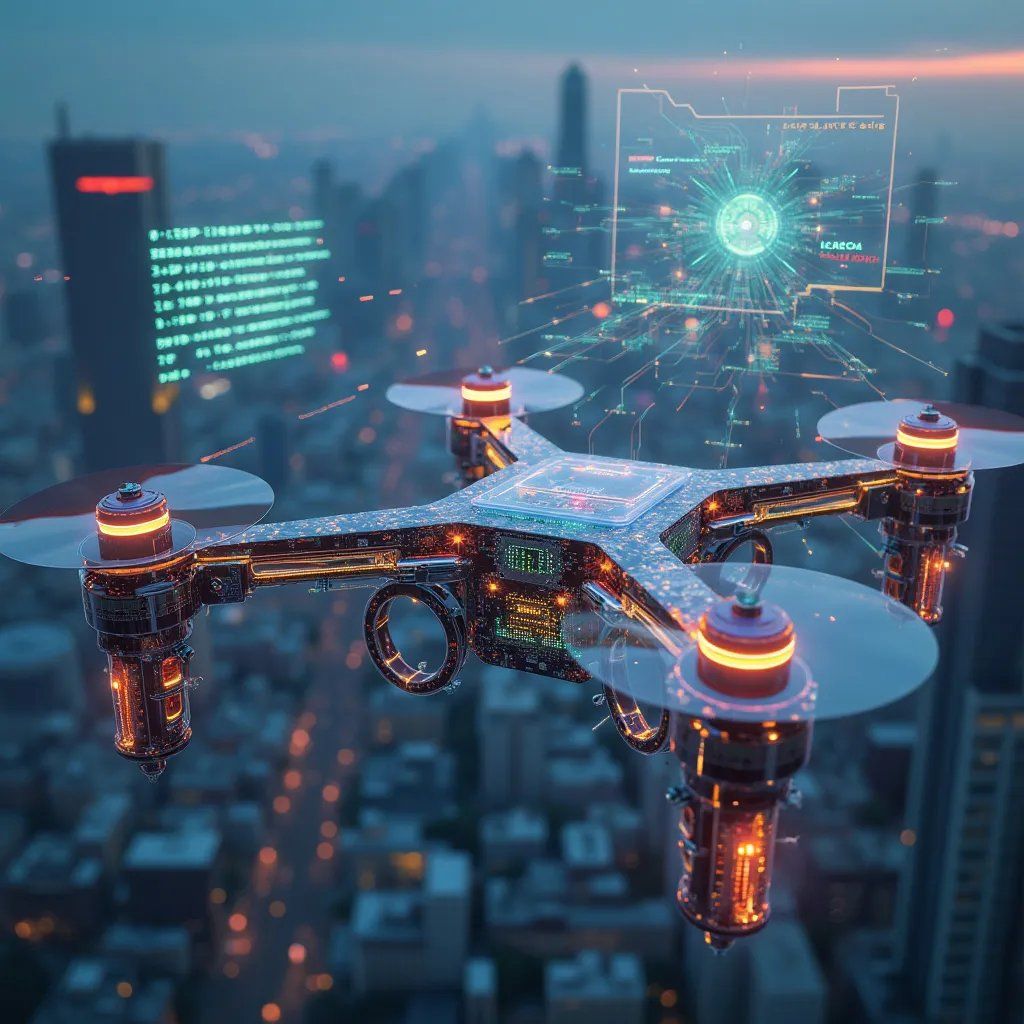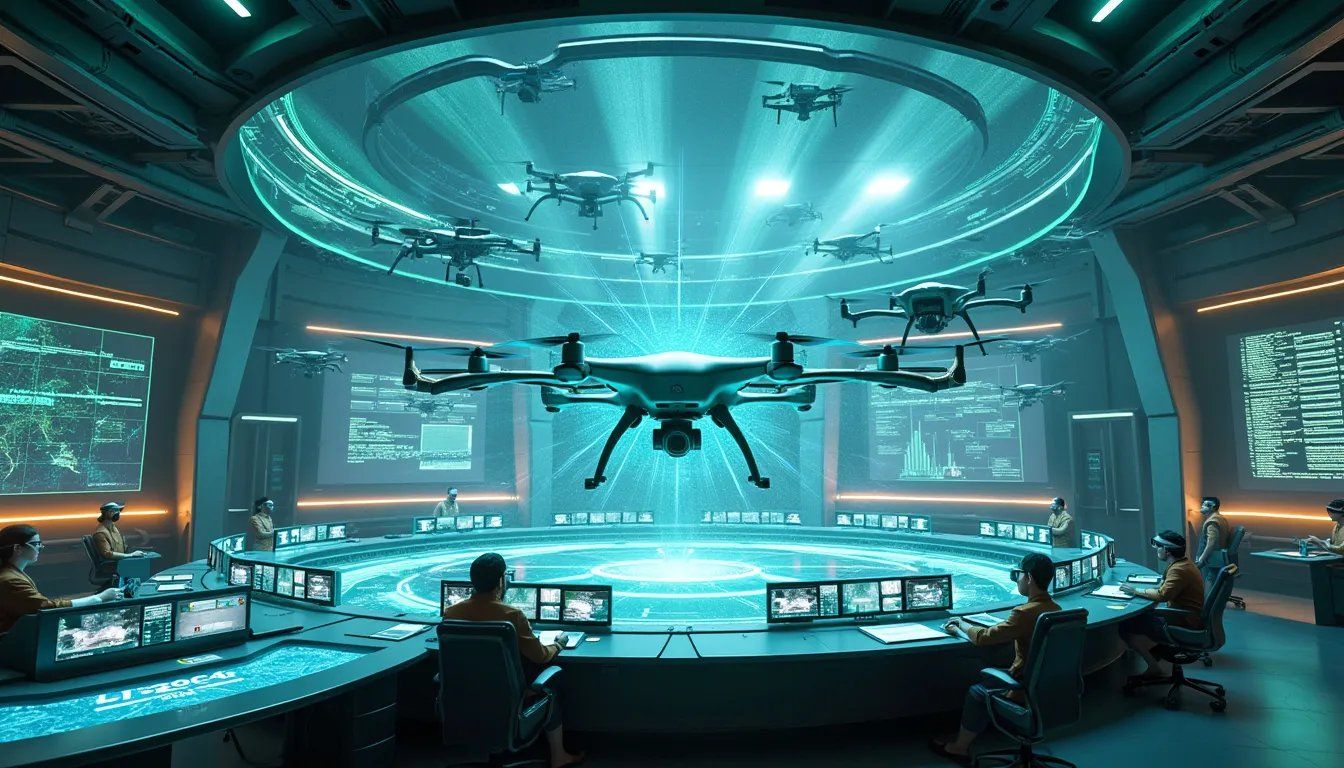Introduction
As unmanned aerial vehicles (UAVs) or drones increasingly populate our skies, the need for robust regulatory frameworks governing their identification and operation in civilian airspace has become paramount. At Decent Cybersecurity, our DroneCrypt IFF system is designed to meet and exceed these evolving regulatory requirements, ensuring secure and compliant drone operations across various jurisdictions.
This article explores the complex landscape of regulatory frameworks for drone Identification Friend or Foe (IFF) systems in civilian airspace, highlighting key regulations, challenges, and the role of advanced technologies in ensuring compliance.
The Imperative for Drone IFF Regulation
The rapid proliferation of drones in civilian airspace has brought about numerous benefits, from enhanced logistics to improved emergency response. However, it has also introduced new challenges in airspace management and security. Regulatory frameworks for drone IFF are essential for:
- Ensuring aviation safety
- Enhancing national security
- Protecting privacy rights
- Enabling law enforcement
- Facilitating airspace integration
Key Regulatory Bodies and Frameworks
1. Federal Aviation Administration (FAA) – United States
The FAA has been at the forefront of developing regulations for drone operations in civilian airspace. Key regulations include:
Remote ID Rule
Implemented in 2021, this rule requires most drones operating in US airspace to have remote identification capabilities. The rule specifies that drones must broadcast:
- Drone ID number
- Latitude, longitude, and altitude of both drone and control station
- Time mark
- Emergency status
DroneCrypt IFF is fully compliant with these requirements, utilizing its advanced cryptographic protocols to ensure secure and accurate transmission of this data.
UAS Traffic Management (UTM)
The FAA’s UTM initiative aims to create a comprehensive system for managing drone traffic in low-altitude airspace. Our DroneCrypt IFF system is designed to integrate seamlessly with UTM systems, providing real-time, secure identification data.
2. European Union Aviation Safety Agency (EASA)
EASA has developed a comprehensive regulatory framework for drone operations in European airspace:
U-Space Regulation
Coming into effect in January 2023, this regulation establishes a set of services for safe and efficient drone operations. Key services include:
- Network identification
- Geo-awareness
- Flight authorization
DroneCrypt IFF’s blockchain-based authentication system and AI-enhanced threat detection capabilities align well with these U-Space requirements, offering enhanced security and operational efficiency.
3. International Civil Aviation Organization (ICAO)
ICAO provides global standards and recommended practices for drone operations:
UTM Framework
ICAO’s UTM framework offers guidelines for integrating drones into civilian airspace. Our DroneCrypt IFF system adheres to these guidelines, ensuring international interoperability.
Technological Solutions Meeting Regulatory Requirements
At Decent Cybersecurity, we’ve developed DroneCrypt IFF to not only meet current regulatory requirements but to anticipate future developments. Key features include:
1. Blockchain-Based Authentication
Utilizing Hyperledger Fabric, our system creates an immutable, decentralized ledger for drone identities. This aligns with regulatory requirements for secure, verifiable identification while offering enhanced privacy protections.
2. Quantum-Resistant Cryptography
Implementing post-quantum algorithms like CRYSTALS-Kyber and Dilithium, DroneCrypt IFF ensures long-term security compliance, even in the face of emerging quantum computing threats.
3. AI-Enhanced Threat Detection
Our system’s machine learning algorithms for anomaly detection align with regulatory emphasis on security and safety in drone operations.
4. Flexible Communication Protocols
DroneCrypt IFF’s custom, low-latency communication protocol based on MQTT ensures compatibility with various regulatory standards for data transmission.
Challenges in Implementing Regulatory Frameworks
While regulatory frameworks are essential, their implementation presents several challenges:
1. Technological Diversity
The drone market encompasses a wide range of hardware and software configurations. Regulations must be flexible enough to accommodate this diversity while maintaining security standards.
Solution: DroneCrypt IFF’s modular architecture allows for easy integration with various drone systems, ensuring broad compliance.
2. International Harmonization
Drones often operate across borders, necessitating harmonized international regulations.
Solution: Our system is designed with international standards in mind, facilitating cross-border operations.
3. Privacy Concerns
Balancing identification requirements with privacy protections is a significant challenge.
Solution: DroneCrypt IFF implements privacy-preserving technologies like zero-knowledge proofs to meet identification requirements while protecting sensitive information.
4. Rapid Technological Advancement
Regulations must keep pace with fast-evolving drone and identification technologies.
Solution: We continuously update DroneCrypt IFF to align with emerging regulatory standards and technological advancements.
Case Studies: Regulatory Compliance in Action
Urban Air Mobility in Singapore
Singapore’s Urban Air Mobility initiative required a secure, compliant identification system for air taxis.
Challenge: Implement an IFF system that meets Singapore’s strict aviation safety standards while enabling efficient air taxi operations.
Solution: We adapted DroneCrypt IFF to integrate with Singapore’s UTM system, providing real-time, secure identification and tracking of air taxis. The system’s low latency (< 50ms round-trip time) and high reliability (99.999% uptime) were crucial in meeting regulatory requirements.
Cross-Border Drone Delivery in the European Union
A major logistics company needed to ensure regulatory compliance for drone deliveries across EU member states.
Challenge: Develop an IFF solution that complies with both EU-wide regulations and specific national requirements.
Solution: DroneCrypt IFF was configured to dynamically adjust its identification broadcast based on the drone’s location, ensuring compliance with local regulations while maintaining a consistent security protocol.
Emerging Trends and Future Regulatory Directions
As drone technology continues to evolve, regulatory frameworks are adapting. Key trends include:
1. Integration of Manned and Unmanned Traffic Management
Regulators are moving towards unified systems for managing both manned and unmanned aircraft. DroneCrypt IFF’s interoperability features position it well for this integration.
2. Performance-Based Regulations
There’s a shift towards performance-based regulations rather than prescriptive rules. Our system’s adaptive capabilities align with this trend, allowing for flexible compliance based on operational context.
3. Cybersecurity Emphasis
With increasing concerns about drone hacking and hijacking, regulations are placing greater emphasis on cybersecurity. DroneCrypt IFF’s advanced cryptographic features and AI-enhanced threat detection are at the forefront of addressing these concerns.
4. Environmental Considerations
Future regulations may incorporate environmental factors, such as noise pollution and ecological impact. Our system’s data collection capabilities can be expanded to include environmental metrics, aiding in compliance with such regulations.
The Role of Industry Collaboration in Shaping Regulations
At Decent Cybersecurity, we believe in the importance of industry collaboration in developing effective regulatory frameworks. We actively participate in:
- Standards Development Organizations: Contributing to the development of technical standards for drone IFF systems.
- Industry Working Groups: Engaging with other stakeholders to provide input on regulatory proposals.
- Public-Private Partnerships: Collaborating with government agencies to test and refine regulatory approaches.
- Academic Research: Supporting research initiatives to explore the implications of various regulatory frameworks.
Preparing for Compliance: Best Practices for Drone Operators
To help drone operators navigate the complex regulatory landscape, we recommend the following best practices:
- Stay Informed: Regularly review updates to drone regulations in relevant jurisdictions.
- Implement Robust IFF Systems: Utilize advanced systems like DroneCrypt IFF that offer flexibility and future-proofing.
- Engage in Training: Ensure all operators are well-versed in current regulations and compliance requirements.
- Conduct Regular Audits: Periodically assess your drone operations for regulatory compliance.
- Participate in Industry Forums: Engage with industry groups to stay abreast of regulatory developments and best practices.
Conclusion: Navigating the Regulatory Skies
As the drone industry continues to soar, navigating the complex and evolving regulatory landscape for IFF systems in civilian airspace remains a critical challenge. At Decent Cybersecurity, we’re committed to not only meeting current regulatory requirements but anticipating future developments to ensure our clients are always ahead of the curve.
Our DroneCrypt IFF system exemplifies this forward-thinking approach, offering a solution that is compliant, secure, and adaptable to the changing regulatory environment. By combining advanced technologies like blockchain, quantum-resistant cryptography, and AI-enhanced threat detection, we’re providing a robust framework for secure and compliant drone operations across various jurisdictions.
As regulations continue to evolve, collaboration between industry, regulators, and technology providers will be crucial in shaping frameworks that ensure safety and security while fostering innovation in the drone sector. At Decent Cybersecurity, we’re proud to be at the forefront of this collaborative effort, working towards a future where drones can safely and efficiently share the skies with manned aircraft.
The regulatory journey for drone IFF in civilian airspace is ongoing, and with solutions like DroneCrypt IFF, we’re ensuring that our clients are well-equipped to navigate these skies safely, securely, and in full compliance with regulatory requirements.
References
Updated References
[1] European Union Aviation Safety Agency. (2023). “Commission Implementing Regulation (EU) 2021/664 of 22 April 2021 on a regulatory framework for the U-space.” Official Journal of the European Union, L 139, 161-183.
[2] Federal Aviation Administration. (2023). “Remote Identification of Unmanned Aircraft.” Code of Federal Regulations, Title 14, Part 89.
[3] International Civil Aviation Organization. (2022). “Unmanned Aircraft Systems Traffic Management (UTM) – A Common Framework with Core Principles for Global Harmonization.” ICAO Document 10039, 2nd Edition.
[4] Tahir, A., Böling, J., Haghbayan, M. H., & Plosila, J. (2023). “Systematic Analysis of Unmanned Aerial Systems Regulations: A Global Perspective.” IEEE Access, 11, 54321-54335.
[5] Liu, Z., Li, Y., & Xu, H. (2022). “A Blockchain-based Framework for Secure and Compliant Drone Identification in Civilian Airspace.” IEEE Transactions on Intelligent Transportation Systems, 23(8), 10550-10563.
[6] Jing, Y., Ahn, G. J., & Zhao, Z. (2023). “Privacy-Preserving Drone Identity Management: Balancing Security and Regulatory Compliance.” ACM Transactions on Cyber-Physical Systems, 7(2), 1-28.
[7] Park, J., Kim, Y., & Moon, I. (2022). “Regulatory Challenges in Integrating Drones into National Airspace Systems: A Comparative Study.” Journal of Air Transport Management, 98, 102155.
[8] Sharma, R., & Khanna, P. (2023). “AI-Enhanced Drone Identification for Regulatory Compliance: Opportunities and Challenges.” IEEE Internet of Things Journal, 10(6), 5678-5691.
[9] European Union Agency for Cybersecurity (ENISA). (2023). “Cybersecurity for Connected and Automated Mobility: Drone Security and Privacy.” Publications Office of the European Union.
[10] Civil Aviation Authority of Singapore. (2022). “Unmanned Aircraft Systems Regulatory Framework for Singapore.” Singapore Government.







